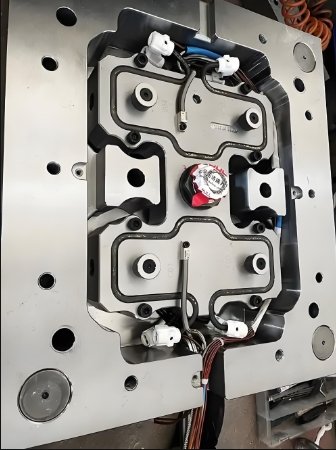
Medical devices require high precision and sterility. Medical injection molding meets these demands. Cleanroom manufacturing plays a key role. It ensures contamination-free production. Mold makers design precise molds for these environments.
What is Cleanroom Manufacturing?
1. Definition
Cleanroom manufacturing takes place in a controlled environment. Airborne particles, humidity, and temperature are regulated.
2. Purpose
It prevents contamination in medical injection molding. This ensures product safety.
3. Importance in Medical Devices
Medical products must meet strict hygiene standards. Cleanrooms help achieve this.
Cleanroom Standards for Medical Injection Molding
1. ISO Classifications
Cleanrooms follow ISO standards. The most common are:
- ISO 8: 3,520,000 particles per cubic meter
- ISO 7: 352,000 particles per cubic meter
- ISO 6: 35,200 particles per cubic meter
2. FDA Compliance
Devices must meet FDA cleanliness requirements.
3. Sterilization Protocols
Strict rules ensure product sterility.
Benefits of Cleanroom Medical Injection Molding
1. Contamination Prevention
Cleanrooms keep bacteria and dust away.
2. Consistent Quality
Controlled environments reduce defects.
3. Regulatory Compliance
Products meet FDA and ISO standards.
4. Safer Medical Devices
Sterile manufacturing protects patients.
5. Increased Production Efficiency
Fewer defects mean faster production.
Applications of Cleanroom Medical Injection Molding
1. Surgical Instruments
Precision molding ensures safe tools.
2. Drug Delivery Systems
Cleanrooms prevent contamination in inhalers and syringes.
3. Implantable Devices
Sterile production protects implants from bacteria.
4. Diagnostic Equipment
High-precision parts improve testing accuracy.
5. IV Components
Tubes and connectors require sterile manufacturing.
How Mold Makers Support Cleanroom Manufacturing
1. Designing Precision Molds
They create molds for strict hygiene requirements.
2. Using Medical-Grade Materials
Only approved plastics are used.
3. Ensuring Mold Cleanliness
Molds undergo strict cleaning processes.
4. Optimizing Injection Molding Cycles
They design molds for faster, defect-free production.
Key Equipment in Cleanroom Injection Molding
1. HEPA Filters
They remove airborne particles.
2. Sealed Molding Machines
Machines prevent contamination.
3. Antistatic Systems
These reduce dust attraction.
4. Automated Handling Systems
Less human contact minimizes contamination risks.
Challenges in Cleanroom Medical Injection Molding
1. High Setup Costs
Cleanrooms require advanced technology.
2. Strict Maintenance
Facilities must stay contamination-free.
3. Limited Material Choices
Only FDA-approved plastics are allowed.
4. Higher Energy Consumption
Air filtration systems increase power use.
Future of Cleanroom Medical Injection Molding
1. Automation Growth
More robots reduce contamination risks.
2. Smart Cleanrooms
Sensors monitor air quality in real-time.
3. Sustainable Manufacturing
Eco-friendly materials will reduce waste.
Cleanroom environments ensure safe medical injection molding. Mold makers design high-precision molds for sterile production. This process guarantees high-quality, contamination-free medical devices.
